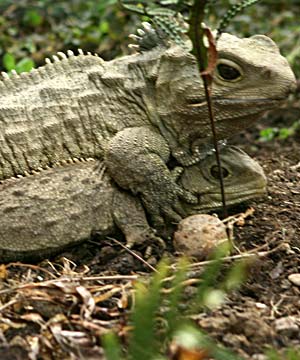 Professor David Lambert and his team from the Allan Wilson Centre for Molecular Ecology and Evolution performeda study of New Zealand’s “living dinosaur” the tuatara. They recovered DNA sequences from the bones of ancient tuatara which are up to 8000 years old. The conclusions they drew were amazing: despite all the ods, the tuatara has evolved faster than any other animal.
Professor David Lambert and his team from the Allan Wilson Centre for Molecular Ecology and Evolution performeda study of New Zealand’s “living dinosaur” the tuatara. They recovered DNA sequences from the bones of ancient tuatara which are up to 8000 years old. The conclusions they drew were amazing: despite all the ods, the tuatara has evolved faster than any other animal.
Although it has remained largely physically unchanged over very long periods of evolution, they are evolving – at a DNA level – in a way that nobody would have believed.
“What we found is that the tuatara has the highest molecular evolutionary rate that anyone has measured,” Professor Lambert says.
They’ve surpassed the Adélie penguins, which had the previous record of evolution rate. The tuatara rate is significantly faster than for animals including the cave bear, lion, ox and horse.
Allan Wilson was a pioneer of molecular evolution. His ideas were controversial when introduced 40 years ago, but this new research supports them. Here’s what he had to say:
“Of course we would have expected that the tuatara, which does everything slowly — they grow slowly, reproduce slowly and have a very slow metabolism — would have evolved slowly. In fact, at the DNA level, they evolve extremely quickly, which supports a hypothesis proposed by the evolutionary biologist Allan Wilson, who suggested that the rate of molecular evolution was uncoupled from the rate of morphological evolution.”






